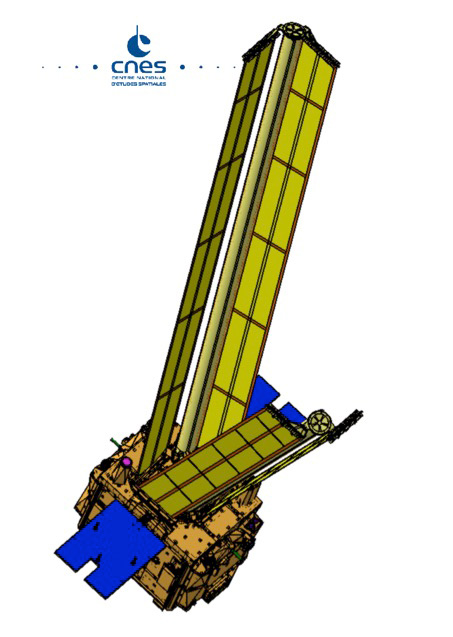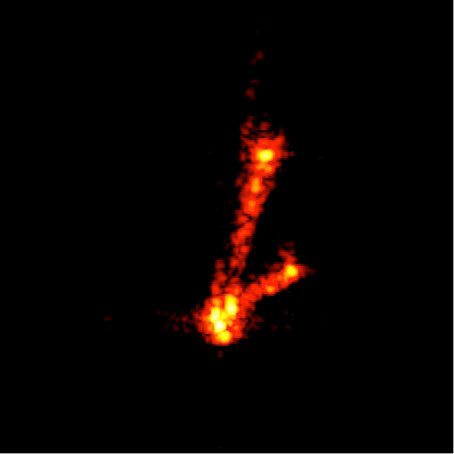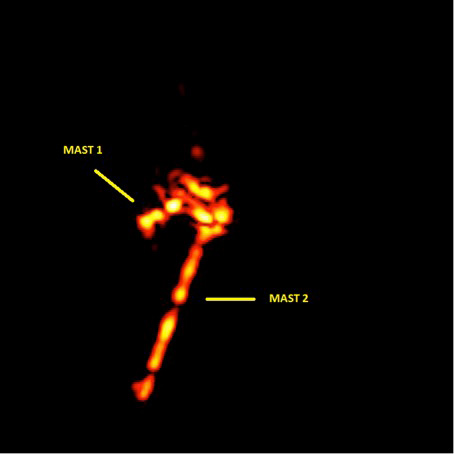Supporting satellite deorbiting missions with TIRA
When a mission is over, satellites become space debris and, with this, a danger to active satellites. New deorbiting systems aim to drastically reduce the orbital lifetime. TIRA is capable of reliably verifying the functionality of deorbiting systems for this purpose.



When a satellite mission ends, only space debris is left orbiting the earth. With the dramatic increase in the number of satellites, space debris is also increasing continuously, steadily raising the probability of collisions in low Earth orbit. In turn, with each collision of space debris, the amount of space debris is multiplied, thus permanently increasing the danger for the satellites in use.
Depending on the orbit height, decommissioned satellites can remain in space as space debris for many decades, centuries, or even forever if one does not take suitable measures to initiate a lowering of the satellites to make them burn up in the Earth's atmosphere or other measures directed against space debris. To ensure that the low Earth orbit will still be usable for satellites in the future, an international code of conduct adopted in 2004 concerning the subject of space debris requiring an orbital lifetime of less than 25 years after the end of a mission for the LEO (low Earth orbit). In lower orbits under 600 km, the friction of the satellite in the atmosphere can indeed be sufficient to make the satellite burn up in less than 25 years. In higher orbit, however, this goal cannot be reached without additional measures.
By emitting gas from control nozzles in a controlled manner, deorbiting systems can be used to lower a satellite's orbit to the point that it burns up in the earth's atmosphere. However, active systems are expensive and heavy, increasing the launch costs due their additional weight. That is why active systems are unattractive from an economic point of view, especially for smaller satellites. Therefore, a main focus is currently being placed on the development of passive deorbiting systems, which are cost-effective and relatively light, while increasing the surface-to-weight ratio to the point that they act like brake sails in the very thin Earth atmosphere. For instance, these brake sails can consist of a foil with a thickness of only a few ten micrometers, which will be inflated like a balloon once the mission is over. Thus, these systems are light and can be stored in the smallest of spaces. Compared to active systems, they are also very cost-effective.
The French space agency CNES (Centre National d’Etudes Spatiales) has developed the passive deorbiting system IDEAS (Innovative DEorbiting Aerobrake System) for its satellite MicroSCOPE (Micro-Satellite à traînée Compensée pour l'Observation du Principe d'Equivalence). When the satellite mission ended, two deployable arms consisting of thin aluminum foil were filled with nitrogen. In addition, these arms are equipped with two sails each to increase the surface. This provides a surface of 6.3 m2 with the complete deorbiting system weighing a total of 12 kg. The two wings are positioned at a specific angle to each other to create the most drag possible. Pressure sensors were installed to check the deployed deorbiting system. These pressure sensors, however, only provide an indirect indication of whether or not the deployment of the wings worked correctly.
For this reason, Fraunhofer FHR was assigned with the task of creating images of the satellite with its space radar TIRA to verify the correct deployment of the wings. TIRA's Ku-band radar took images of MicroSCOPE in two flyover passages, directly after the deployment of the arms. The 2D radar images obtained by this were then compared to a 3D satellite model in detail and analyzed. This made it possible to not only identify two deployed arms in the radar image with absolute certainty, but also to measure their length and estimate the opening angle between the two arms. And thus, a final analysis together with the CNES was able to verify the correct deployment of the IDEAS deorbiting system based on the TIRA data.
IDEAS is not the only deorbiting system of its kind. Other systems with different sail geometries and dimensions are being developed or are already on active satellites. Fraunhofer FHR has already received additional inquiries for the verification of deorbiting systems, and many more are likely to come. TIRA is ready to successfully support future deorbiting missions.